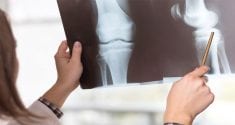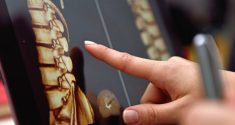Can Low Bone Density Lead to Serious Health Problems?
Bone density decreases with age. While this is a normal process, some people are more affected than others. If the value is -2.5 or less, people are diagnosed with osteoporosis, a disease that is characterized by reduced bone mass and the loss of tissue within the connective tissue structures. As bones become weaker, the risk of falls and fractures increases, which often take time to heal and can lead to deformities. Women are twice as likely to develop this condition than men. This is mainly due to a lack of estrogen, the hormone that protects female bones. However, low bone density can not only lead to osteoporosis: research shows that low bone density can also negatively affect health in other ways.
How Low Bone Density is Related to Dementia
According to a study published March 22, 2023 in the online edition of Neurology®, the medical journal of the American Academy of Neurology, people with low bone density may have an increased risk of developing dementia compared to people with higher bone density. The study does not prove that low bone density causes dementia. It shows only one association.

Low bone density and dementia are two conditions that often affect older people at the same time, especially as bone loss often increases during dementia due to physical inactivity and poor diet. However, little is known about bone loss in the pre-dementia period. The study found that bone loss actually occurs before dementia and is therefore associated with a higher risk of dementia. The study involved 3,651 people in the Netherlands with an average age of 72 years who did not have dementia at the start of the study. On average over 11 years, 688 people or 19% developed dementia. Researchers examined X-rays to determine bone density. Participants were interviewed every four to five years and completed physical exams such as bone scans and tests for dementia. Of the 1,211 people with the lowest total body bone density, 90 people developed dementia within 10 years, compared with 57 of the 1,211 people with the highest bone density.
After accounting for factors such as age, gender, education, other illnesses and medications, and a family history of dementia, the researchers found that people with the lowest total body bone density were 42 percent more likely to develop dementia within 10 years than those with the highest group. Previous research has found that factors such as diet and exercise can affect bones differently, as can dementia risk. Current research has found a link between bone loss and dementia, but more studies are needed to better understand the link between bone density and memory loss. It is possible for bone loss to occur in the earliest stages of dementia, years before clinical symptoms appear. If this were the case, bone loss could be an indicator of risk of dementia, and people with bone loss could be specifically screened.
Low Bone Density and the Risk of Heart Disease in Women
But not only the brain can suffer. According to other studies, which were published in the journal Heart, thin and brittle bones are closely linked to the risk of heart disease in women, with thinning of the lower (lumbar) spine, upper thigh bone (femoral neck) and hip being particularly predictive of an increased risk of heart attack and stroke.
Previous research suggests that people with osteoporosis often suffer from atherosclerosis (hardening and narrowing of the arteries), suggesting that the two conditions may be linked. Women have a higher risk of dying from heart disease. For this reason, researchers reviewed the medical records of 50- to 80-year-old women who had a DXA scan to test for osteoporosis at Seoul National University’s Bundang Hospital between 2005 and 2014. After excluding those who already had heart disease and other serious medical conditions at the time of the scan, the final analysis included 12,681 women whose health had been tracked using national registry data for an average of 9 years. A total of 468 women (around 4 percent) suffered a heart attack or stroke during the observation period. About 237 died. Thinning/weakening bones, expressed as low bone mineral density at the lumbar spine, femoral neck, and hip, were independently associated with an increased (16% to 38%) risk of heart attack or stroke after accounting for potential confounding factors such as age, high blood pressure, high cholesterol, smoking and previous broken bones.
It’s not clear exactly how osteoporosis and atherosclerosis are related, but long-term inflammation and cumulative oxidative stress play key roles in both age-related bone loss and atherosclerosis, while sex hormones, particularly estrogen, help to regulate bone turnover and the vascular system, the researchers explain. This is an observational study and therefore cannot establish a cause, only a correlation. And the researchers acknowledge several limitations of their findings: The study included women from a medical center in South Korea, so the findings may not be more broadly applicable. And they weren’t able to provide potentially important information about physical activity or steroid use to accumulate, both of which affect bone mineral density and cardiovascular disease risk.
The Risk of Hearing Loss Also Increases
Many people struggle with deafness and hearing loss as they age, which also limits communication. Previous studies of people with hearing loss have revealed a higher prevalence of osteoporosis – a disease in which bones become weak and brittle – and low bone mineral density (LBD). However, there is little research into whether these conditions can affect the risk of hearing loss over time. It is also not known whether taking bisphosphonates, the main drug used to prevent fractures in people with reduced bone density, can prevent hearing loss. As part of the Conservation of Hearing Study (CHEARS), researchers at Brigham and Women’s Hospital analyzed data from nearly 144,000 women followed for up to 34 years. They found that participants with osteoporosis or LBD were up to 40 percent more likely to develop moderate or severe hearing loss later in life. The study, published in the Journal of the American Geriatric Society, also found that bisphosphonates did not alter the risk of hearing loss.

For their analysis, the researchers used data from the decades-long Nurses’ Health Study (NHS) and NHS II, two large, ongoing cohorts of female nurses established in 1976 and 1989, respectively. Researchers looked at moderate or worse hearing loss, which was self-reported by participants in questionnaires that were filled out every two years. In addition, they used the CHEARS Audiometry Assessment Arm to include data on the participants’ audiometric thresholds (a measure of hearing sensitivity based on the loudness of sounds). In both the NHS and NHS II cohorts, the researchers found that the risk of hearing loss was higher in women with osteoporosis or LBD, and that taking bisphosphonates did not mitigate the increased risk. It also found that a history of vertebral fracture was associated with up to a 40 percent higher risk of hearing loss, but the same was not true for hip fractures, the two most common fractures associated with osteoporosis.
The differences in findings between these skeletal sites may reflect differences in the composition and metabolism of the bones in the spine and hip. These results could provide new insights into changes in the bone surrounding the middle and inner ear that may contribute to hearing loss. While the underlying mechanisms by which osteoporosis and LBD may contribute to age-related hearing loss are still unclear, the researchers suggest that abnormal bone remodeling and changes in the pathways involved in maintaining bone homeostasis may affect the integrity of the bone that supports nerves and protects structures most involved in hearing. Osteoporosis and low bone density may be important factors in age-related hearing loss. Establishing lifelong healthy diet and lifestyle habits could offer important benefits for protecting bone and hearing health in the future, according to the researchers.
How to Protect Bones in Old Age
Regular exercise is important to ensure good bone health as you age. The International Osteoporosis Foundation recommends 30 minutes of physical activity per day to strengthen muscles and reduce the risk of disease. Bones respond to movement by forming denser and stronger cells. A combination of cardio and endurance training is considered ideal for the bones. You should avooid negative habits like smoking and the consumption of alcohol. Research suggests that bone mineral density may be related to alcohol consumption. Alcohol absorbs calcium and vitamin D – two essential nutrients for good bone health. Nicotine can also disrupt the bone regeneration process, leading to faster loss of bone mass. Smoking activates the hormone cortisol. When the levels are too high, such as in hypercortisolism, it carries a greater risk of osteoporosis. Last but not least, also the right diet plays an important role in keeping the bones healthy. Your daily diet should primarily contain nutrients such as calcium and vitamin D. To get enough vitamin D, you should get plenty of sunlight. Moreover it is important to eat foods such as meat, eggs, fish, dairy products and green vegetables. It is often difficult for the body to absorb enough calcium from food and to produce enough vitamin D itself. For this reason, a nutritional supplement such as Osteochron®, which provides all essential nutrients at the right time, can be helpful to ensure optimal bone health.




